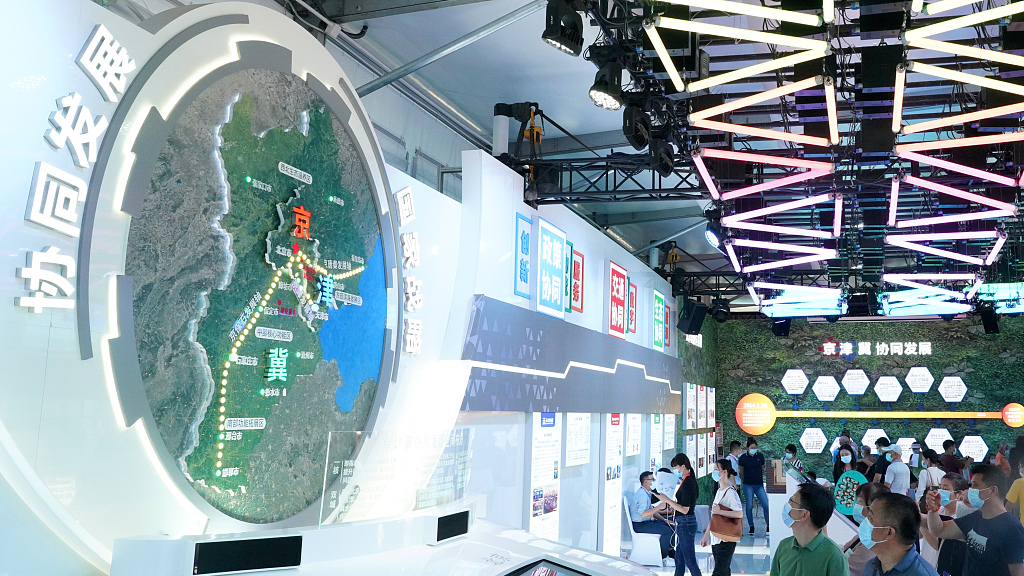
The Beijing-Tianjin-Hebei region exhibition area at CIFTIS 2020, Beijing, China, Sep 7, 2020. /CFP
The Beijing-Tianjin-Hebei region exhibition area at CIFTIS 2020, Beijing, China, Sep 7, 2020. /CFP
February 26 marks the ninth anniversary of the coordinated development strategy of the Beijing-Tianjin-Hebei (BTH) region, a major economic area in China. The region has witnessed dramatic growth, marked by integrated and high-quality development, with rapid advances made in emerging sectors such as the digital economy and high-tech industries in particular.
Remarkable progress in the region's coordinated development is highlighted by its GDP figures.
The combined GDP of the BTH region topped ten trillion yuan ($1.46 trillion) in 2022, 1.8 times that of 2013. Both Beijing and Hebei saw GDP exceed four trillion yuan each in 2022, two times and 1.7 times that of 2013, respectively. At 1.6 trillion yuan last year, Tianjin's GDP was 1.6 times that of 2013, Beijing Municipal Bureau of Statistics said in a report on Monday.
Notably, the region saw the results of speed-up efforts in innovation and robust growth in emerging sectors last year.
The 1.7 trillion yuan value-added output of Beijing's digital economy accounted over 40 percent of the city's total GDP in 2022, 6.4 percentage points higher than that of 2015. While the industrial output of Tianjin's high-tech manufacturing sector and Hebei's high-tech industry accounted for 14.2 percent and 20.6 percent of the overall industrial output in the two regions in 2022, 1.9 percentage points and 8.8 percentage points higher than that of 2014 and 2013, respectively.
Among the forth batch of "little giant" companies in 2022, 535 are based in the BTH region, accounting for 12.3 percent of the nation's total, according to official data.